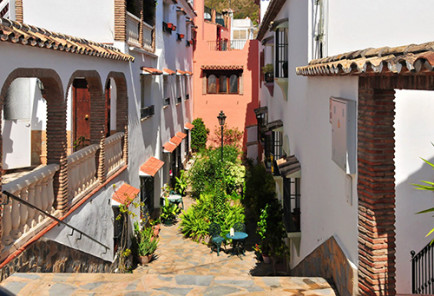
Across all parts of the Spanish real estate sector, investment volumes are at the highest levels for a decade.
It can get mildly irritating to witness how slowly portions of the world’s most powerful media latch on to trends happening in Spain.
While the Catalan crisis was a rare moment in which the world’s eyes were kept up to date in real time of events on the ground, a general rule of thumb tends to be – if it’s been picked up by the likes of the BBC, Sky, or the Guardian – then it’s already almost old news…
The news agencies such as Reuters and parts of Bloomberg do a better job in keeping their fingers on the Spanish pulse, which is why it was strange to see Bloomberg report on Spain this week with the headline “Spanish real estate is hot property again”. Strange because, well, this has been the case for some time, but it’s at least nice to know that the New York-headquartered Bloomberg has begun to notice.
The Bloomberg report does, however, collate some pretty statistics that paint the Spanish real estate sector in a rather glowing light. Investment in residential, commercial and industrial property is the highest it has been since the 2008 credit crunch, and 2018 is poised to be just as strong, if not stronger.
“2017 is basically the year when it’s all come together,” said Madrid-based Merlin Properties founder Ismael Clemente. “The Spanish economy is doing well, its banks are healthy, there’s a very investor-friendly legal framework and property is still cheap compare to other European countries.”
The strength of the recovery is starkest when one examines Spanish banks’ balance sheets, Bloomberg says. This year, most banks have managed to offload foreclosed assets such as distressed property sales, and have been able to count on growing foreign investment across all segments of the property sector.
After the devastating crash in 2008, it took almost four years of languishing in the economic wilderness – bookended by a painful and embarrassing bank bailout to the tune of €41 billion – before activity began to pick up again.
Fernando Rodriguez de Acuna Martinez, director of Madrid real estate consultancy R.R: de Acuna & Asociados, told Bloomberg that between the dawning of the global financial crisis in 2008 and the Spanish banks riding to the rescue in 2012, “the phones literally stopped ringing”.
“Investment volumes today are the fruition of that bailout, which has allowed lenders to mark down real estate loans and assets at a price investors will pay,” de Acuna Martinez added.
Allied to this smart piece of financial gerrymandering is Spain’s economic turnaround, which is on course to see GDP grow 3.1% this year and 2.5% in 2018. Unemployment in Spain is at a nine-year low, which is boosting retailer and construction industry confidence in the process.
Of course, VIVA has known this for more than 12 months, but with the mighty mainstream media now onside, perhaps the pace of recovery can be accelerated even more!
 en
en



 Vlaams-Nederlands
Vlaams-Nederlands
0 Comments
Leave a Comment
DISCLAIMER
The opinions and comments expressed by contributors to this Blog are theirs alone and do not necessarily reflect the views of VIVA Homes Under the Sun Ltd, any of its associated companies, or employees; nor is VIVA to be held responsible or accountable for the accuracy of any of the information supplied.
Have you got something to say?